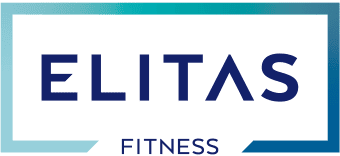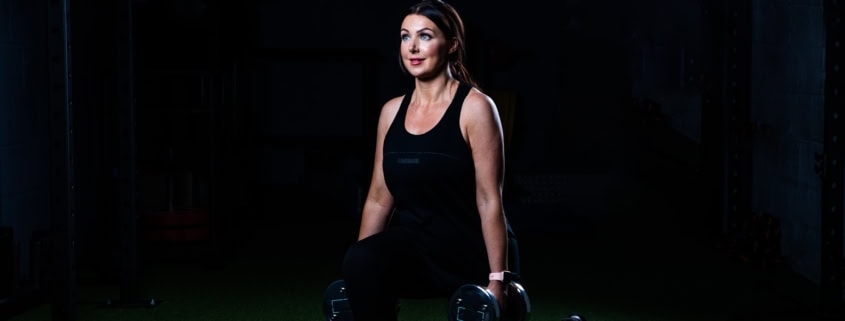Get the Jump on Muscle Soreness Post Lockdown
When the gyms reopen in April (hopefully!) one of the first issues most people are going to face is DOMS (Delayed Onset Muscle Soreness) – pain to touch, contract or stretch your muscles which gets progressively worse for 24-48 hours post exercise and stays for up to 7 days. DOMS is generally accepted to be the body’s response to the muscle damage and inflammation present following an unaccustomed bout of eccentric muscular contractions (i.e. your first gym session post lockdown!). To clarify, eccentric muscular contractions occur when a muscle is lengthening while producing tension (e.g. during the lowering phase of a dumbbell curl or squat).
Why is this a problem?
A severe bout of DOMS will set your progress back by at least a week at a time when you are desperate to hit the ground running – the countdown to summer is already on and most people have just replaced their New Year post-Christmas health kick with a 3-month-long Netflix and takeaways binge! Not only is exercising in the presence of DOMS uncomfortable, it will lead to significantly poorer workouts and increased injury risk due to the reduction in strength, power and range of motion and altered muscle recruitment patterns and coordination.
Why might you still experience DOMS even if you have been exercising during the lockdown?
There are people out there who managed to maintain a solid exercise regime throughout this lockdown period – congratulations if this is you! While this regular exercise is fantastic for maintaining your health and preventing lockdown weight gain, it won’t necessarily prevent you from having the serious DOMS setback when you get back in the gym.
Many people have gravitated to different forms of exercise while the gyms have been closed due to a lack of equipment availability. Exercise that does not include eccentric muscular contractions through a large range of motion with sufficient tension will not serve to prevent muscle soreness when you get back in the gym and under a bar for the first time. So even if you have been very consistent with your walking, running, rowing, swimming, yoga etc., your muscles will still be unprepared for the way in which they will be challenged in the gym during your squats, deadlifts, bench presses etc.
What common treatments for DOMS are a waste of time?
Most of the ways in which people attempt to prevent or cure their DOMS are totally ineffective:
- Stretching – The presence of DOMS temporarily reduces your muscles’ range of motion, leaving you feeling tight and immobile. It therefore seems logical that static stretching will help prevent or cure the soreness. Not only will stretching fail to prevent DOMS after exercise, it can actually contribute to DOMS – the end range of a static stretch is actually an eccentric contraction as your muscle attempts to prevent further lengthening! So, while static stretching for specific muscle groups at specific times for specific individuals can provide benefits, preventing or curing DOMS is not one of them.
- Performing a cool down – One theory for the mechanism of DOMS is the presence of lactic acid. If this theory was correct then performing a slow aerobic cooldown to help pump metabolites out of your muscles after a workout would be effective. However, the lactic acid theory has been disproved: not only do lactic acid levels return to normal much sooner after a workout than the peak onset of DOMS but studies have shown intense (lactic acid-producing) concentric muscle contractions do not produce the same levels of DOMS as similar exercise protocols consisting of eccentric muscle contractions.
- Anti-inflammatory drugs (NSAIDs) – While the use of NSAIDs has been shown to significantly reduce DOMS, it is not recommended. Primarily because chronic overuse of such drugs is associated with a number of adverse health effects, but also because there is evidence to suggest their use can impair the adaptive response to exercise (reduce gains in muscle size and strength).
- Cryotherapy – The superficial application of ice and/or immersion in cold water has been shown to have no significant effect on DOMS and is also pretty unpleasant!
So, what should you do?
The only effective and recommended way to prevent/reduce the effects of DOMS from intense eccentric exercise is to perform more eccentric exercise beforehand! Research has shown that a single bout of submaximal eccentric exercise will significantly reduce markers of muscle damage and DOMS from a maximal bout of eccentric exercise 2 weeks later! The magnitude of this protective effect is in proportion to the magnitude of the muscle damage induced by the first bout of exercise. Therefore, the most effective way to minimise the effects of DOMS are obviously to start with shorter lower intensity workouts and build up progressively.
The application of this research and advice to those of you returning to gym-based strength training in April is to perform several bouts of exercise at home to mimic what you will be doing in the gym as closely as possible. The more muscle damage you can induce in these workouts, the less soreness you will experience when back in the gym. However even much lower intensity eccentric contractions have been shown to have some effect so it is worth doing what you can even if you have no equipment whatsoever.
Keep things simple: choose three exercises for the lower body that will enable you to challenge your quads, hamstrings and glutes eccentrically (e.g. squats, lunges and Romanian deadlifts) and at least one push and one pull exercise for the upper body (e.g. press ups and inverted rows). Even if you are an advanced lifter, one bout of 3 x 10 on each of these exercises with bodyweight resistance and a slow and controlled eccentric on every rep will be enough to reduce the DOMS in your first week back in the gym. More sessions with more volume and/or more resistance will have a greater protective effect still.



